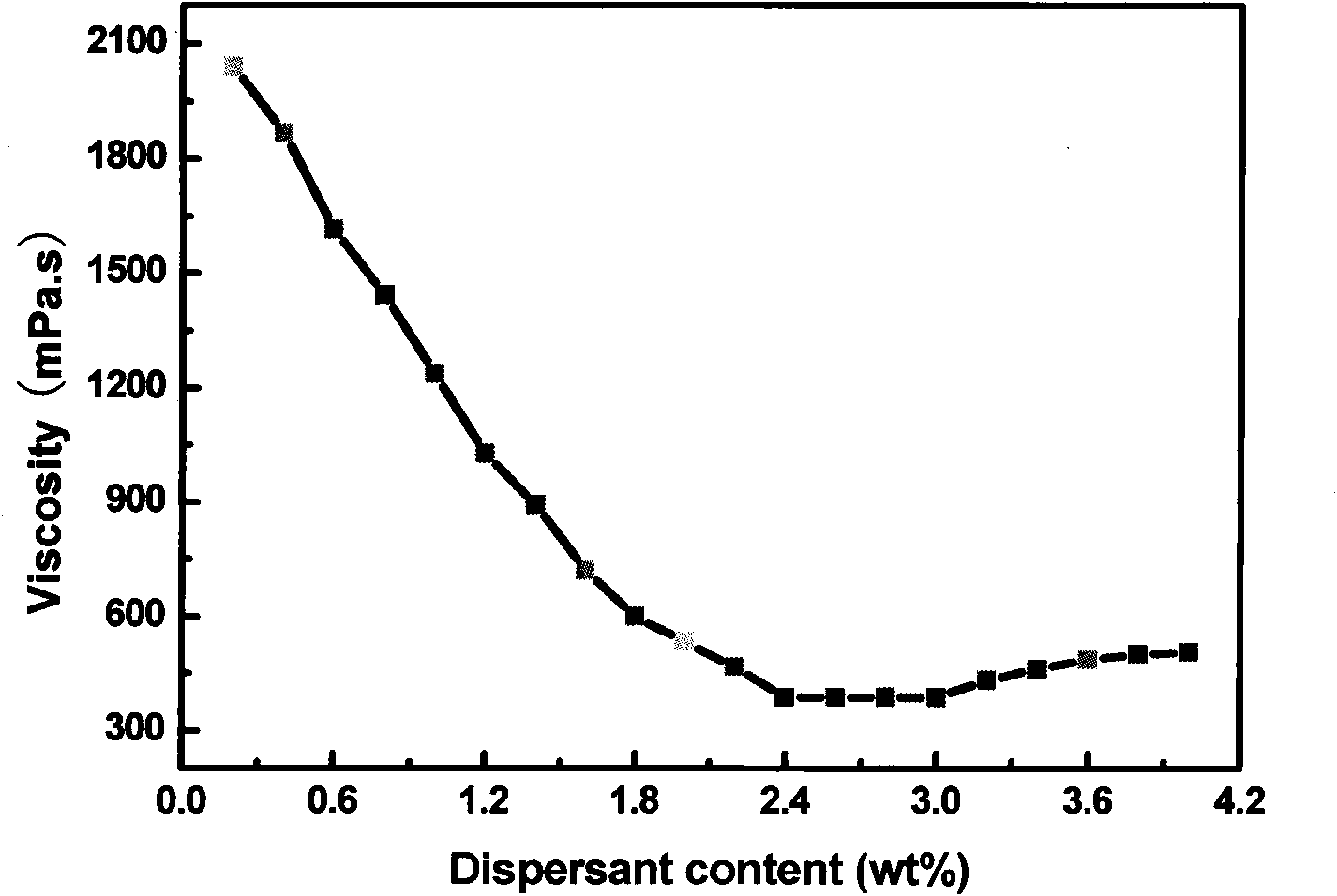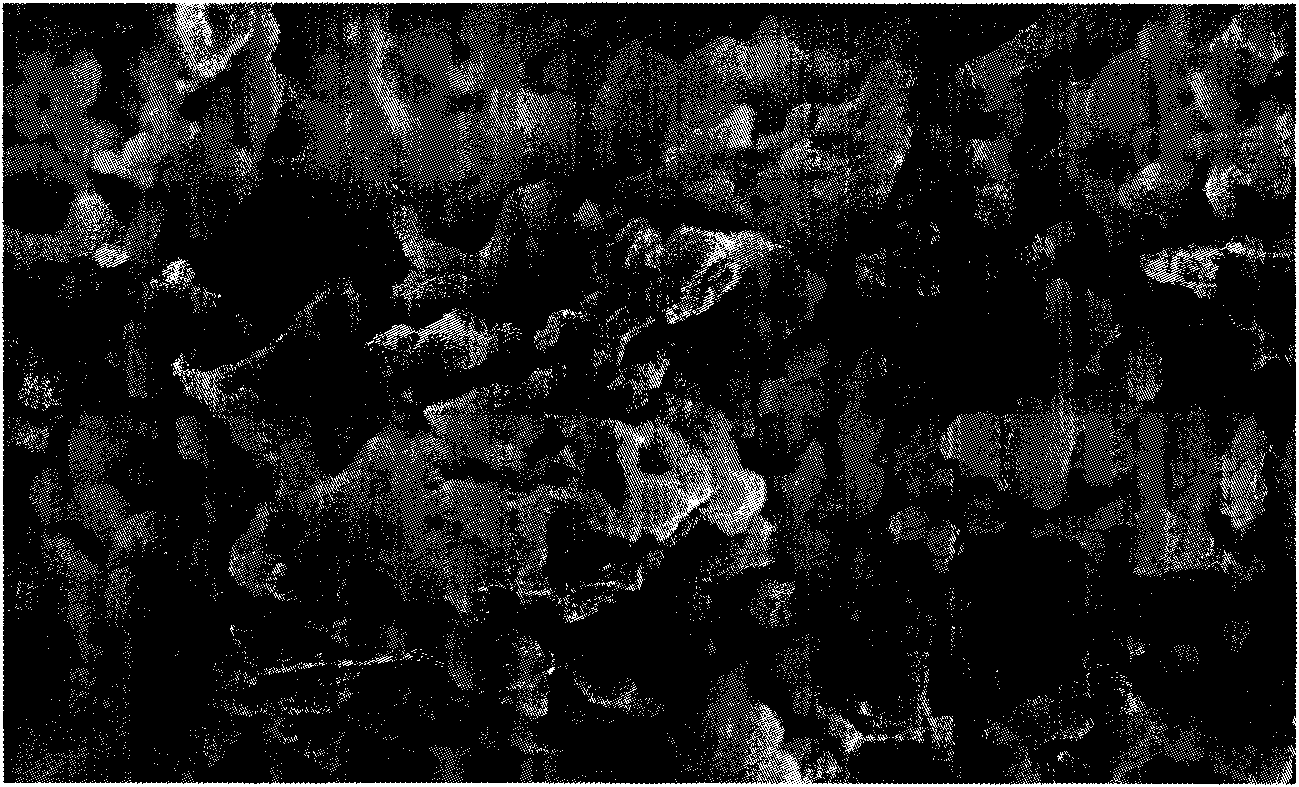Method for preparing magnesium silicate porous ceramic
A technology of porous ceramics and magnesium silicate, which is applied in the field of porous ceramics, can solve the problems that micron-sized pores cannot be made, holes cannot be connected continuously, and gaps are not evenly distributed, so that it is easy to implement, the method is simple, low cost effect
- Summary
- Abstract
- Description
- Claims
- Application Information
AI Technical Summary
Problems solved by technology
Method used
Image
Examples
Embodiment 1
[0024] Weigh the MgO powder and put it in a muffle furnace for calcination at 500°C for 3 hours to remove CO 2 and moisture; then SiO 2 Dry in a drying oven at 100°C for 24 hours to avoid the stoichiometric ratio shift due to moisture absorption. Use a precision electronic balance to measure the processed raw materials by MgO / SiO 2 Proportion R = 2.05 after accurate weighing of ingredients. Put the prepared powder into an alumina crucible and pre-fire it in a muffle furnace at 1200°C in an air atmosphere for 3 hours to fully react the raw material powder. The calcined powder is processed by ball milling, drying and sieving, so that the particle size of the powder reaches 100 μm, and the obtained magnesium silicate powder is mixed with the premixed liquid to prepare a ceramic slurry with a solid content greater than 50%. Magnesium acid powder 5wt% cornstarch and dispersant after ball milling to promote uniform dispersion of the slurry, then add the initiator and catalyst to ...
Embodiment 2
[0029] Weigh the MgO powder, put it in a muffle furnace and calcinate at 700°C for 4 hours to remove CO 2 and moisture; then SiO 2 Dry in a drying oven at 150°C for 12 hours to avoid the stoichiometric ratio shift due to moisture absorption. Use a precision electronic balance to measure the processed raw materials by MgO / SiO 2Proportion R = 2.05 after accurate weighing of ingredients. Put the prepared powder into the alumina crucible and place it in a muffle furnace at 1050°C in an air atmosphere for 5 hours to pre-fire to fully react the raw material powder. The calcined powder is processed by ball milling, drying and sieving, so that the particle size of the powder reaches 150 μm, and the obtained magnesium silicate powder is mixed with the premixed liquid to prepare a ceramic slurry with a solid content greater than 50%. Magnesium acid powder 10wt% cornstarch and dispersant after ball milling to promote uniform dispersion of the slurry, and then the initiator and catalys...
Embodiment 3
[0034] Weigh the MgO powder, put it in a muffle furnace and calcinate at 800°C for 2 hours to remove CO 2 and moisture; then SiO 2 Dry in a drying oven at 80°C for 24 hours to avoid the shift of stoichiometric ratio due to moisture absorption. Use a precision electronic balance to measure the processed raw materials by MgO / SiO 2 Proportion R = 2.05 after accurate weighing of ingredients. Put the prepared powder into an alumina crucible and place it in a muffle furnace at 1100°C in an air atmosphere for 4 hours to pre-fire to fully react the raw material powder. The calcined powder is processed by ball milling, drying and sieving, so that the particle size of the powder reaches 250 μm, and the obtained magnesium silicate powder is mixed with the premix to prepare a ceramic slurry with a solid content greater than 50%. Magnesium acid powder 20wt% cornstarch and dispersant after ball milling to promote uniform dispersion of the slurry, and then the initiator and catalyst are a...
PUM
| Property | Measurement | Unit |
|---|---|---|
| particle size | aaaaa | aaaaa |
| density | aaaaa | aaaaa |
| particle size | aaaaa | aaaaa |
Abstract
Description
Claims
Application Information
 Login to View More
Login to View More - R&D
- Intellectual Property
- Life Sciences
- Materials
- Tech Scout
- Unparalleled Data Quality
- Higher Quality Content
- 60% Fewer Hallucinations
Browse by: Latest US Patents, China's latest patents, Technical Efficacy Thesaurus, Application Domain, Technology Topic, Popular Technical Reports.
© 2025 PatSnap. All rights reserved.Legal|Privacy policy|Modern Slavery Act Transparency Statement|Sitemap|About US| Contact US: help@patsnap.com


